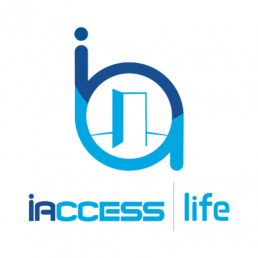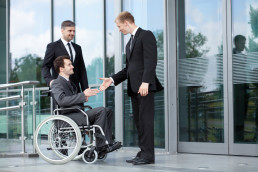Inclusivity and Equal Access
What is Inclusivity and equal access?
Inclusivity and equal access refers to the concept that everyone should have equal access to opportunities, self-development activities, social amenities, and self-expression. Inclusivity and equal access supports equality for people with disabilities who are commonly left out and marginalized.
In other words, Inclusivity and equal access is a concept that advocates for the inclusion of people with disabilities in regular activities and professional endeavors. It emphasizes the individuality and rights of people with disabilities and encourages them to go for what they want and make their own choices.
However, working toward Inclusivity and equal access goes beyond mere encouragement. It also requires that policies and attitudes that favor and protect the rights of people with disabilities are put in place, in the community, workplace, religious institutions, health care centers, retail stores and in all other spaces.
Inclusivity and equal access advocates that people with disabilities be considered when designing public buildings and spaces such as parks, retail centers, hotels, schools and offices. In addition, Inclusivity and equal access advocates that transportation shouldn’t be an impossible task for people with disabilities to navigate on their own. They should be able to freely commute from one place to another without having to feel self conscious. Public transport serves to empower those without transportation to freely navigate their places and all forms of public transit should be cognizant of accommodations to serve those with disabilities as well.
Inclusivity and equal access advocates that people with disabilities should be able to live full and enjoyable lives. They should be able to enjoy relationships, perform daily activities and generally pursuit happiness. Inclusivity and equal access advocates that people with disabilities MUST have equal access to everything that people without disabilities can access.
Different Aspects Relating the Importance of Inclusivity and Equal Access
Inclusivity and equal access fosters productivity in professional and work environments. It promotes heightened engagement in social settings and all-round development in the community. When nobody is left out or pushed aside, everyone is eager to contribute in their unique ways because they’re convinced that their contributions matter.
Why is Inclusivity and equal access necessary in the workplace:
Inclusivity and equal access in the workplace will not only establish your organization as a flexible one that can accommodate everybody, but it will also significantly increase your organization’s growth and boost its productivity.
This 2018 Accenture Report details how companies that invest in inclusivity and equal access, hire persons with disabilities and foster inclusive cultures report bottom-line benefits that show proven ROI, better profitability and greater market share on average.
Why Inclusivity and equal access is essential in customer service:
Inclusivity and equal access are essential in customer service because people with disabilities are not less of a customer than people without disabilities. Inclusivity and equal access are crucial because every customer deserves to be heard and attended to.
Inclusivity and equal access in customer service also help people with disabilities feel welcome and confident about expressing their dissatisfaction.
Why Inclusivity and equal access is vital in public buildings and places:
Inclusivity and equal access are essential in public buildings and places because they are public buildings and places and people with disabilities are also public members.
Inclusivity and equal access in public buildings and places help people with disabilities feel motivated to enjoy what these buildings and homes offer. Tearing down every form of discrimination against people with disabilities and welcoming them by putting specific systems in place to accommodate them will significantly increase the sense of comfort these places give.
Generally, Inclusivity and equal access are essential in all places and all aspects. People with disabilities, regardless of where they are, must be considered, included, and treated with respect. Instead of characterizing them by their disabilities and relegating them to unpleasant positions, their individuality must be acknowledged and respected.
How to cultivate the Inclusivity and equal access culture.
How to practice Inclusivity and equal access in a work environment:
1. Ensure that the environment is conducive and comfortable for them to navigate: people with disabilities might eventually find a way to work around a complicated office space, but you are certainly not trying to make it difficult for them to find their way around. The simpler the architectural structure of a place, the better. Once the system has been settled, focus on the arrangement. Consider them while you get every appliance and furniture. You don’t want them to feel like they’re missing out on something by getting a piece of furniture or appliance they can’t efficiently utilize.
2. Enlighten your other employees on the concept of disability etiquette and Inclusivity. Make them understand that they’re not doing people with disabilities a favor by being effusively lovely to them. Please encourage them to respect the individuality and choices of people with disabilities. Remind them to offer their help before giving it. Staring at people with disabilities or asking intrusive questions about what happened to them is rude.
3. Listen to them: people with disabilities might perceive things differently from people without disabilities; it depends on the disability and the person. People with mental disabilities could more sensitive therefore needing more assurance and attention. Never make them feel like you’re doing them a favor by listening to them. Please pay attention to their observations and act accordingly. Let them know they can always come to you for help or assistance. Make them feel comfortable and appreciated.
4. Study their capabilities and assign tasks to them accordingly: people with disabilities have disabilities. This means that some things are impossible for them to do. Understanding a person’s disability and giving them tasks without considering the disability is absolutely inconsiderate. You should employ a person with a disability because you think they can carry out the task at hand and not to make yourself look good or benevolent. Hiring them and putting excessive pressure on them is definitely not the way to go.
“Persons with disabilities present business and industry with unique opportunities in labor-force diversity and corporate culture, and they’re a large consumer market eager to know which businesses authentically support their goals and dreams. Leading companies are accelerating disability inclusion as the next frontier of corporate social responsibility and mission-driven investing.”
– Ted Kennedy, Jr., Disabilities Rights Attorney, Connecticut State Senator and Board Chair, American Association of People with Disabilities
How to practice Inclusivity and equal access in customer service:
1. Talk directly: Ignoring people with disabilities to talk to their caregivers is rude. Make eye contact as you communicate with them. If your customer is someone in a wheelchair, make an extra effort to make sure you’re not talking down on them. Get a low chair or sit on your table. Do not cut them off or assume you know everything about them simply because they have a visible disability. Empower them to make their own choices, offer them options and in general let give them opportunities to inform you how you can best serve them and accommodate them.
2. Be patient: people with disabilities might take longer to express themselves and understand what you’re saying to them. It would help if you exercised patience while trying to understand them. Continue in the same spirit of tolerance, explain what you can do to assist them. Remember to communicate with them using simple language and unambiguous terms.
3. Be empathetic: put yourself in their shoes and treat them how you’d want to be treated or more importantly, treat them how they WANT to be treated. Don’t undermine their observations or wave off their complaints. Listen and respond accordingly. If your customer is visually impaired and has essential information you need them to note, you might use a specific form of writing like braille.
Check out our blog post on disability etiquette to for more disability etiquette information.
Additional Disability Etiquette Guidelines
How to practice Inclusivity and equal access in public buildings and places:
1. Offer your help before giving it: people tend to regard people with disabilities as helpless people who can’t do anything by and for themselves. This notion is not only wrong, but it is also disrespectful. People with disabilities put extra effort into being independent and being able to take care of themselves. Automatically assuming they need help and giving it without first offering it might be seen as an attempt to belittle them.
2. Be polite: you don’t have to shout at people who are hearing impaired. Hand demonstrations and speaking clearly will yield better results. Refrain from offering incessant apologies in a bid to be excellent. Be polite by asking questions instead of assuming. Respect their choices and personal space. Don’t just take a visually impaired person’s hand in a bid to lead them if they don’t offer it. Don’t rest on their wheelchair or push it if they didn’t ask for your help.
Conclusion
All in all, Inclusivity and equal access is a worthwhile advocacy everyone should be a part of. Nobody should be made to feel less than a person due to physical or mental disability. Not all disabilities are apparent; hence special treatment is not needed.
People living with disabilities are not babies that should be pampered; they are individuals that should be respected. They have preferences, choices, goals, and thresholds, just like every other person.
More policies need to be put in place to promote Inclusivity and equal access as the rate of unemployed people with disabilities is still high. Social gatherings and structures also need to be more accommodating for them so they can feel like they belong to the community instead of feeling like outcasts.
Disability Etiquette & Inclusivity Training
Understanding the right etiquettes and creating an inclusive environment for people with disabilities, is not only a moral or a legal requirement, but is also good for business. People with disabilities, and their family members, spend their time and discretionary income based on positive experiences. Using a simple and engaging format, we have developed a training course focused on both legal and ethical guidelines, with practical insights and tools to deliver a welcoming environment for the disability community. For more information click here or contact us below to discuss setting up a training session for you and your organization.






[…] offerings accessible to all. In this blog, we offer you some of the common mistakes with respect to equal access audits. Let’s […]